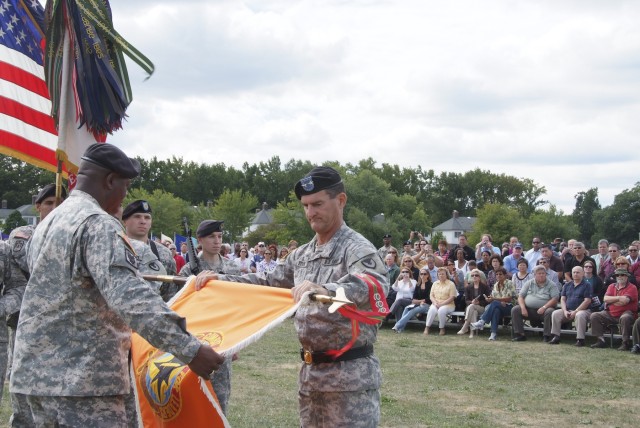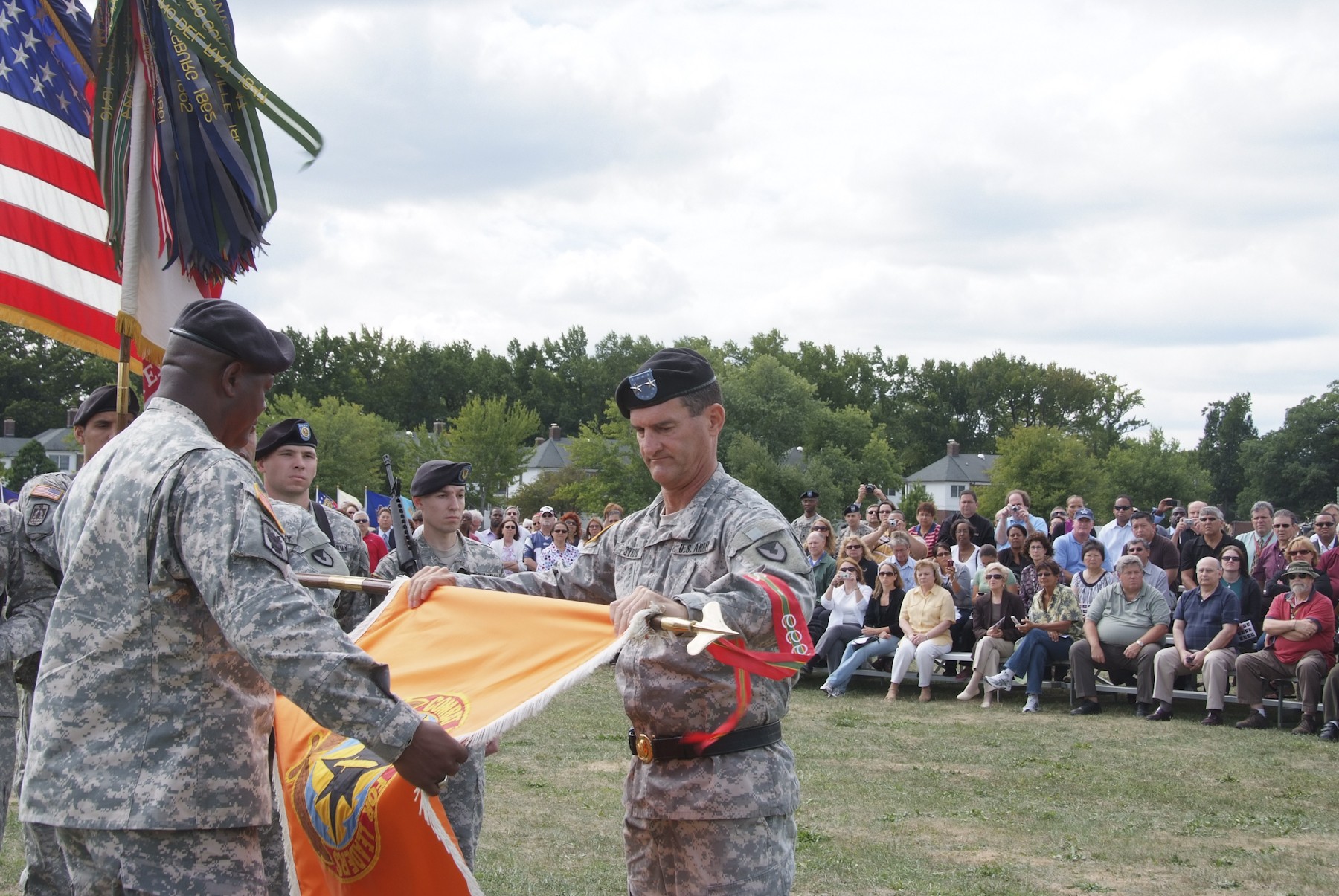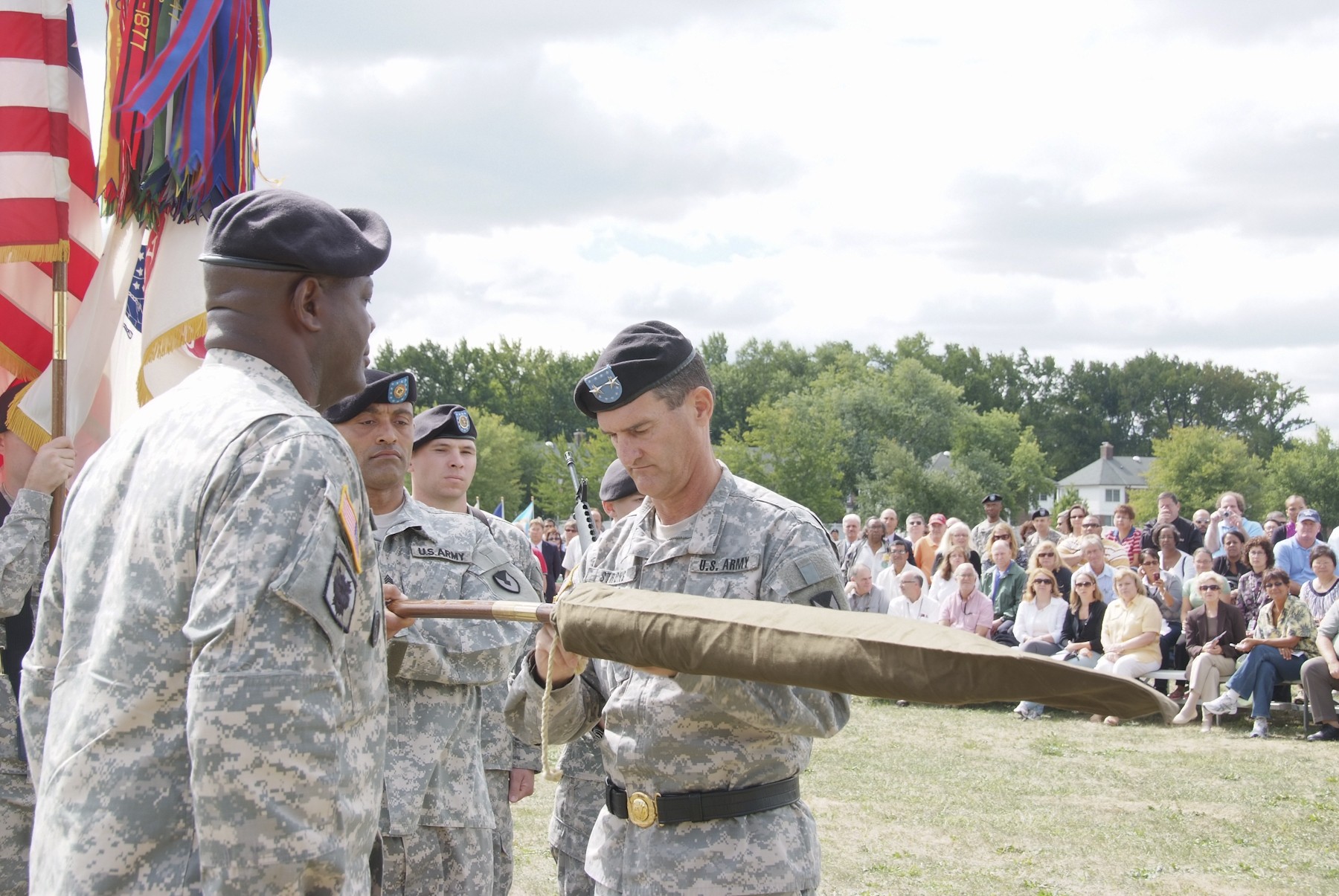FORT MONMOUTH, N.J. (Sept. 13, 2010) -- Roaring cannons, an Army band, a pigeon release and a symbolic helicopter flyover were all part of the "casing of the CECOM colors" ceremony on Greely Field here.
Friday's ceremony marked the official move of the U.S. Army Communications-Electronics Command from Fort Monmouth to its new headquarters at Aberdeen Proving Ground, Md., in accordance with 2005 Base Realignment and Closure law.
The ceremony was presided over by Maj. Gen. Randolph P. Strong, commanding general of CECOM and Fort Monmouth; Edward Thomas, deputy to the commanding general; and CECOM Command Sgt. Maj. Tyrone Johnson. Several former commanding generals and past program executive officers who served here were also in attendance as guests of honor.
A flag-casing ceremony is a time-honored military tradition symbolizing the movement of a unit.
Before the CECOM flag was sheathed and placed in a case for transport, there were honors to the commanding general, including the participation of the U.S. Military Academy Band who performed ruffles and flourishes before the 13-gun salute.
Capt. Steven Raveia, commander of Headquarters Command here, presented Strong with a canister signifying the final round in the last honors given to a commanding general on Fort Monmouth. The canister will be transported and displayed at the new headquarters at APG.
A lengthy history of the fort was read by the ceremony narrator, covering the technological past of the installation from Fort Monmouth's inception to the present. Accompanying the reading, military re-enactors in period uniforms made appearances on the field, carrying field radios and other communications-electronics gear from each era since World War I.
There was also a 21-pigeon release commemorating Army homing pigeons, who were trained here and who served the armed forces as messenger birds in World Wars I and II and in Korea, to remind the audience how far communications have come since the fort's inception in 1917.
In his remarks, Thomas alluded to the CECOM history lesson provided by the narrator. He said the legacy of Fort Monmouth is in better technologies for warfighters but added there's more to it than that.
"You know, in the end, it's all about the people --the generations of engineers and scientists, logisticians, contractors and staff who have worked here over the years and the great leaders who inspired us everyday," Thomas said.
He went on to say a few words of praise about each of the former commanders and former program executive officer partners present. Thomas also acknowledged the presence of Nancy Mallette, the widow of former CECOM Commander Lt. Gen. Alfred J. Mallette, lauding his leadership while he served here.
Thomas noted that while it's appropriate to reminisce about the past and all the technological achievements at Fort Monmouth, it's also time to look to the future.
"This flag casing symbolizes the beginning of a bold new endeavor and adventure as we near the completion of our transition of CECOM and our C4ISR partner organizations to Aberdeen Proving Ground," he said.
Following Thomas's remarks, Strong and Johnson cased the colors in an olive-drab canvas sheath. Addressing the audience immediately afterward, Strong compared casing the colors to the passing of the guidon from one commander to another during a change-of-command ceremony.
He said the flag-casing ceremony symbolized continuity of command, mission, vision, people and purpose. "Clearly, that [CECOM] flag is more than just cloth," Strong said. "It is a symbol that represents the blood, sweat and yes, tears, and the tremendous accomplishments over many years of the highly dedicated Fort Monmouth workforce."
Strong added that a new chapter of the CECOM story is now beginning.
"But, even as we turn the page on this final chapter of our story at Fort Monmouth, we know we will always look back with pride, and, yes, with some nostalgia on our days of glory here," Strong said.






Social Sharing